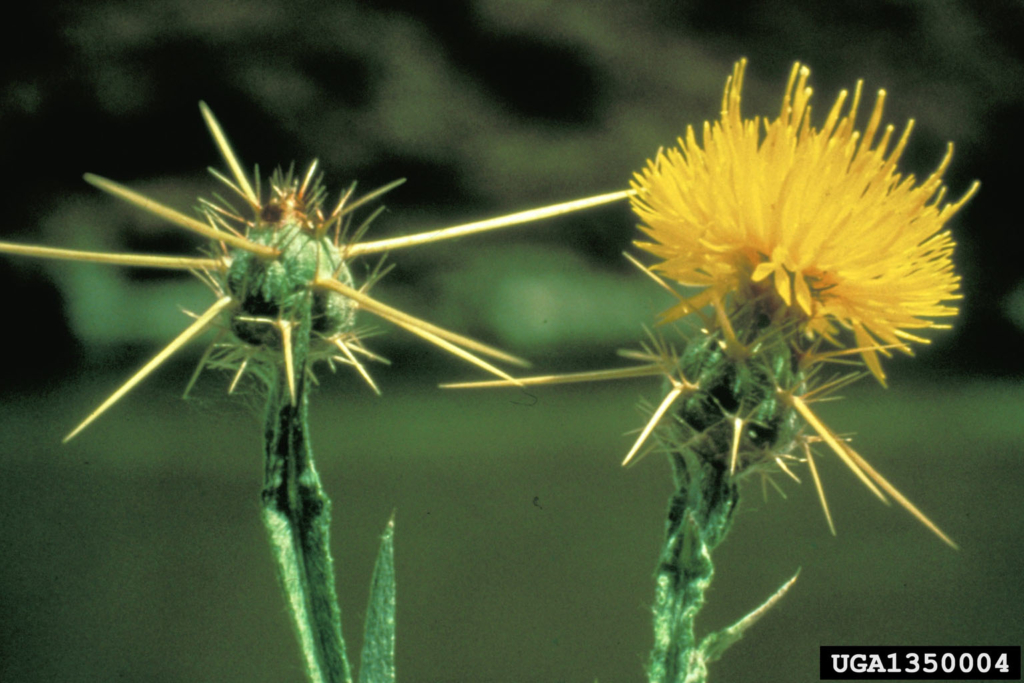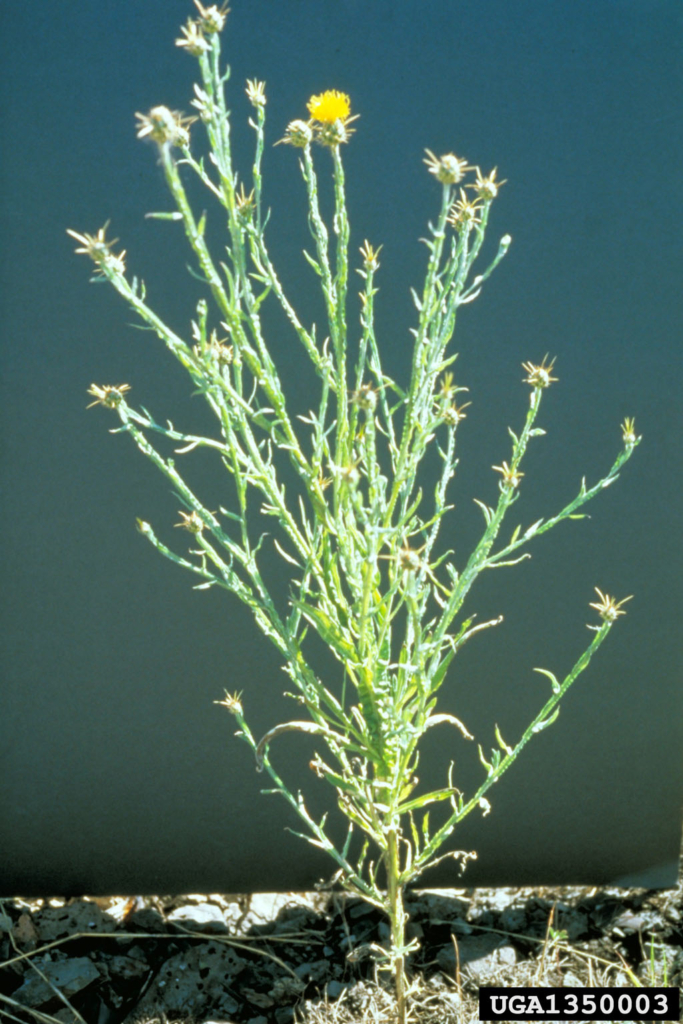Yellow Starthistle
Centaurea solstitialis
Plant Description
A winter annual or sometimes biennial forb. Rosettes with 6-28 leaves close to the ground, yellow flowers with spine-tipped middle and outer bracts.
Plant Details
| Life Forms | |
|---|---|
| Habitats | |
| ODA Listing | |
| Soil and Moisture Conditions | |
| Suggested Actions | |
| Shade Preference | |
| Mature Height | 0.3-3+' |
| Distribution | Found in much of the western US but not widespread in the Willamette Valley. |
| Control | Small infestations can be pulled before plants set seed. Tillage can be used on roadsides but may damage desirable species in wildlands and rangelands. Grazing at the right time may be an option (see FS.USDA.gov link for details). Six biological control agents established in the US can suppress yellow starthistle but are unlikely to eliminate it. Chemical management is most effective when used as one facet of a long term management plan. |
| Reproduction and Spread | Reproduces and spreads by seed. |
| Introduced | Originally from the Mediterranean, was introduced to North America in the early 1800s. |
| Look Alikes | knapweeds, Canada thistle, mullein |
| Impact | Degrades rangelands and pastures. Spines injure grazing animals. |
| More Info |
© Marion Soil and Water Conservation District. All Rights Reserved.


